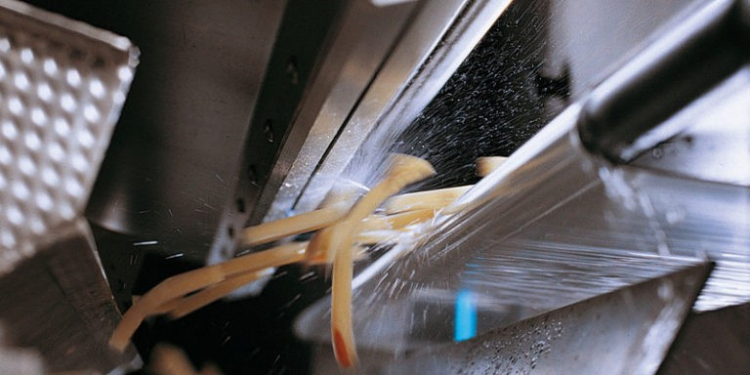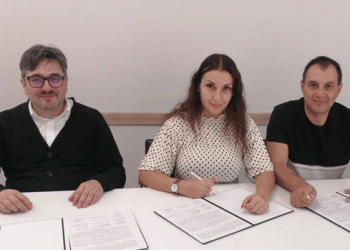Tomra Sorting Solutions has collaborated with the University of Brussels to test a new technique which allows the detection of dangerous levels of acrylamide in processed and fresh potatoes.
The new detection method has been submitted for a patent and may be integrated in one of Tomra’s industrial in-line sorting machines, thus being able to detect and discard food items which contain dangerous levels of acrylamide. Several tons of products could be examined per hour to look for acrylamide compounds without using dyes or chemical additives, and without damaging or even touching the food.
The lead researcher from the University of Brussels, Dr. Lien Smeesters explains: “When frying potatoes, acrylamide formation is one of the biggest concerns of the potato-processing agriculture industry. At present raw potatoes that produce an excess of acrylamide cannot be detected in a fast, sensitive and non-destructive way. Therefore, we have worked with TOMRA Sorting Solutions to develop a spatially-resolved spectroscopic sensor that identifies raw potatoes with high acrylamide precursor concentrations, on basis of their internal scattering properties, in milliseconds.”
According to the researcher, the new application works by scanning the potatoes with a laser that employs ‘spatially resolved spectroscopy’, a non-invasive imaging technique using infrared light. When the laser beam hits a potato, part of the light will be internally scatted during interaction with the tissue. A bad potato produces a deviating internal scattering signal, owing to the high acrylamide precursors, and therefore the system can recognize a ‘fingerprint’ of the undesirable food’. This unwanted food item is spotted in mid-air as it begins to fall. Selected by the internal processor, the potato is then ‘knocked out’ of the batch by being blasted with a stream of air and into a reject bin before it hits the conveyor belt below.
The sensor is able to do this with each and every individual potato scanning and rejecting in tiny fractions of a second. Dr. Smeesters explains: “Not all potatoes result in excessive acrylamide formation during frying. We have sought to spot the undesirable potatoes when they are in their raw, peeled stage. After scanning with laser beams, the good potatoes will emit a different light signal than the unsuited ones leading to an unambiguous detection.”








